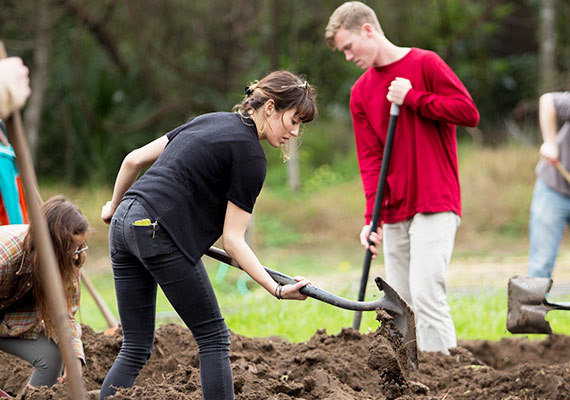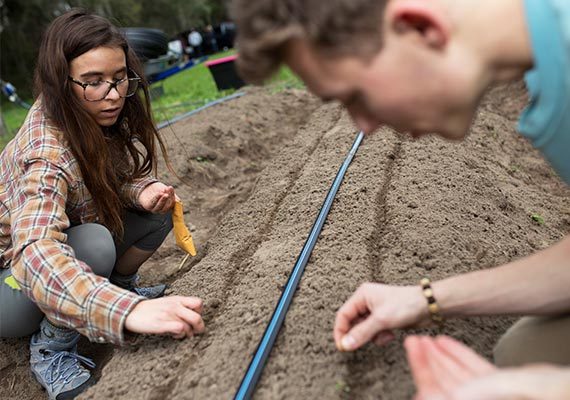
Above: Students working in the Field and Fork Student Gardens at the University of Florida. Part of creating a sustainable food culture is appreciating the labor and resources that go into food production. UF/IFAS Photo by Amy Stuart
At the University of Florida's Innovation Academy, students are challenged to come up with creative, inventive solutions to some of our toughest problems.
This year, the freshman class was tasked with developing a business concept or invention that responded to the issue of food waste. As the campus food system coordinator and part of the UF Institute of Food and Agricultural Sciences, I was invited to talk to some of these students about their ideas and probe their thinking.
Needless to say, this was a group of very smart, very talented young people. But as I listened to them talk about their ideas, I began to notice a trend that worried me.
It's not that their ideas were unrealistic. For example, one student proposed a composting device people could install in their homes and use like any other appliance, an approach I thought was both clever and practical.
The problem was that they all assumed that waste was inevitable and that all we can do is figure out what to do with it. They weren't asking themselves how they could reduce the amount of waste produced in the first place.
When I pointed this out, some of the students got excited. Others looked daunted, struggling to imagine a world in which food waste wasn't a given.
This isn't to say that composting or participating in food drives are bad things to do. These efforts are a great step toward sustainability and food security. In our campus food program, Field and Fork, we embrace composting in our student garden, and we ask our community to donate extra food to our on-campus food pantry.
But these efforts are a response to food waste and don't necessarily stop it from happening.

Above: Student volunteers learn not only how to grow their own food, but also how to manage the gardens' operations. UF/IFAS Photo by Tyler Jones
I encouraged the students to think about how food is often wasted as a result of our preference for beauty and abundance. I asked the students to visualize how fresh fruits and vegetables, for instance, apples, are typically displayed in stores--hundreds of shiny apples, all the same color, size and shape.
The store may not sell all those apples, and the ones not sold may be thrown out. But a mountain of fruit conveys abundance, and we're attracted to abundance. A display of only a few dozen apples is underwhelming, even suspicious. If given the choice, we'd likely choose an apple from the big pile over one from the small pile, even if the apples themselves were identical.
As a class time drew to a close, the students and I thought about how we could tap into this preference for abundance in a way that doesn't lead to wasted food.
One way to reduce food waste may be to offer people, particularly young people, a chance to be part of food production.
As consumers buying broccoli at the store, we only know the end product--we may not even know what a broccoli plant looks like. But when a student at the Field and Fork Student Gardens grows a broccoli plant from seed, she not only understands where her food comes from but also gains an appreciation for all the resources--energy, labor, time, water--that go into producing it.
Understanding how an apple or a head of broccoli is produced may be one way to recognize the vast abundance already embedded in our food.